For a long while now I have been thinking about how commercially produced stuffed animals are made. More specifically, I have wondered how the sewing patterns for these toys are created. Don’t get me wrong, I’m not interested in having my own designs mass produced. I’m all about making each toy one at a time and teaching the craft of toy design. But I feel like the product designers at the big companies like Gund and Ty and Manhatten Toy have something in common with me. Like we’re colleagues in a way.
(all images are of Annie Hulden’s toys designed for Ikea)
I spend four or five hours a day five days a week designing stuffed animals. Product designers for toy companys probably are doing the same. But what does their process look like? How does it differ from mine?
I did some online searching on my own and I wrote this post a week ago asking my blog readers for some possible leads. Joana left me a comment recommending that I get in touch with a designer for Ikea named Annie Hulden.
Looking on Ikea’s website I realized that Doggy, Josephine’s favorite stuffed animal, was designed by Annie Hulden.
(except this image – that’s Josephine and Doggy!)
My mom bought Doggy at Ikea for Josephine and Doggy has been played with, loved, and chewed on a quite a bit by my babe. I thought it would be really amazing to be in touch with Doggy’s designer.
I sent Annie an email asking if she would agree to be interviewed for my blog, and she wrote me right back and said yes! We emailed back and forth and through our conversation I learned quite a bit more about how all those stuffed animals you see in the children’s section of Ikea are designed.
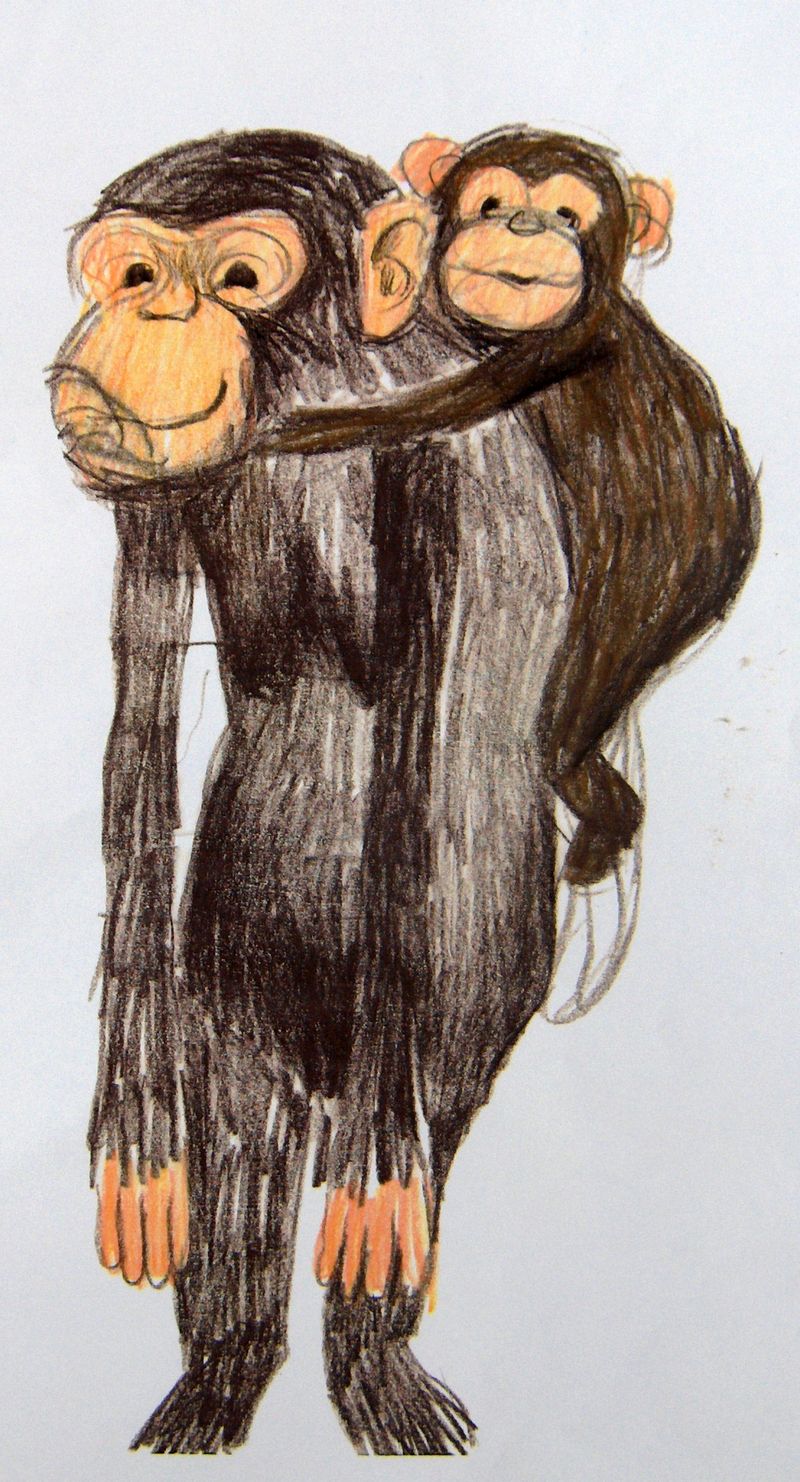
Annie Huldén is a Swedish product designer and a graduate of the University of Gothenburg’s HDK School of Design and Crafts. She is also a children’s book illustrator. Annie often works collaboratively with her design partner, Sanna Dahlman. If you’d like to see Annie’s portfolio you can visit her website. And you can see all of Annie Hulden’s designs for Ikea on this page of their website.
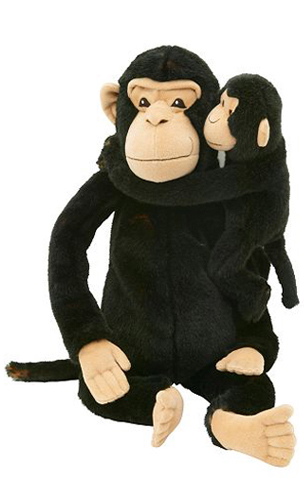
I asked Annie how she chooses which animals to design when she is working for Ikea.
“I often get a brief from Ikea containing a certain theme like “prince and princess,” “wild animals,” or “circus.” I watch movies and look at books for inspiration. Often particular characters come to me already at this early stage.”
“Then, I sketch a lot so that I can get the right look from all sides and angles. Once I’m satisfied, I have to work on the details.”
In this way Annie’s work as a product designer is similar to mine. We both do a lot of visual research, looking at images from children’s books in particular, when we are beginning a new toy design. And we both do a lot of sketching.
I asked Annie what comes next after the sketching. I was most curious about how her sketches become sewing patterns.
“Everything must be as clear as possible for the designers at the factory. It is their job to interpret my sketches into a textile soft toy. In order for them to come as close as possible to what I had in mind I create many detailed drawings to try to describe my ideas. I also write down instructions as complements to the sketeches so that I am describing in both words and pictures what I have in mind.”
“The Ikea soft toys are all produced in Asia. The Asian designers and I don’t always have the same ideas about how a soft toy should look. It is a cultural thing and I have learned that the more descriptions I give them, the better!”
I guess I wasn’t surprised to learn that although the concept for the toy is created by a Swedish designer, the actual sewing pattern is made by a factory worker in Asia. Sadly, I don’t think there is a way to contact that person to learn more about how the actual sewing pattern is created from Annie’s sketches.
For me the next stage is creating a prototype sewing pattern. Someone else does this for Annie (again, I wish I could interview them, too!).
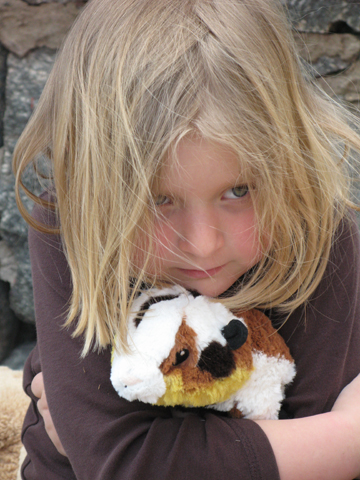
I love this guinea pig sketch that Annie made and I love seeing the final toy being hugged by this little girl. Annie told me a little bit about what happens after her sketches are sent to Asia.
“The pattern designers at the factory interpret my sketches and create a first sample. They send me the sample and I take to it with a pair of scissors and a needle and thread. I also create some new sketeches.”
“Then I send the modified sample back to the factory and they make a new sample. This process continues until me and Ikea and the factory are all satisfied. Sometimes, though, there isn’t enough time to go back and forth until we reach my ultimate ideal for each toy.”
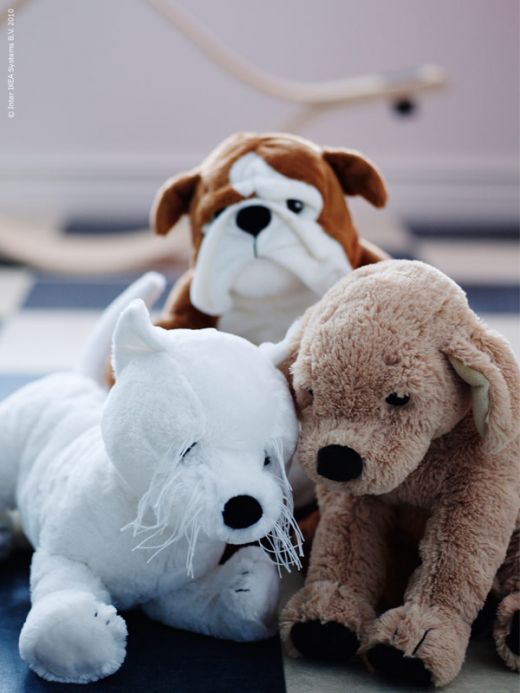
So Annie does do some sewing and cutting to make modifications to the factory sample, even though she doesn’t create the actual pattern pieces.
Editing is a big part of the process for both of us. I just finished chapter 8 in my book and made nine (!) prototypes before I was satisfied with that particular toy’s design. It sounds like there is a fair bit of back and forth with the early prototypes for Annie, too.
I wondered how the fabric for the toys is chosen. Choosing fabrics is such an important part of creating a new toy design.
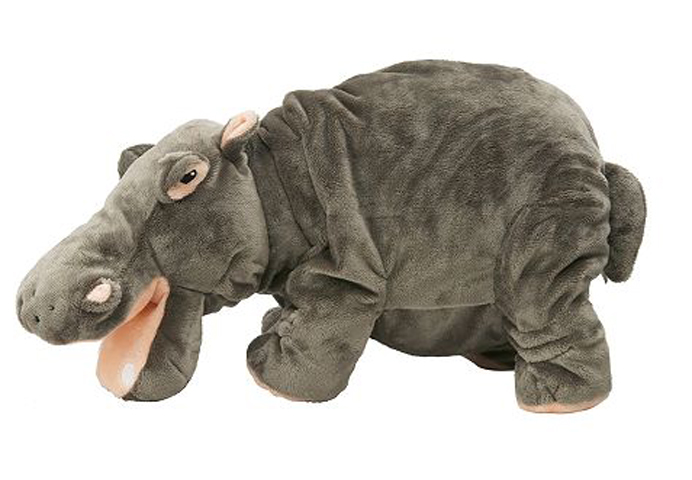
“Ikea has a very high standard of safety in everything made for children. That’s why I never use any ‘beans’ in the soft toys. I want my soft toys to be very soft and nice to hug so I don’t want them filled very much.”
“Ikea doesn’t allow loose parts like glass eyes so all of the my toys have sewn eyes. The eyes are very important for the character of the toy and I always work a lot with the expression of the eyes.”
I could not agree more!
“The fabric must be soft! That is very important. And it must be safe which means that the fibers cannot come off easily. For Ikea, of course, it musn’t be too expensive. Sometimes I make a pattern for the fabric, for example tiger stripes or dots on a seal.”
I generally stuff my toys super firmly, but the soft toys from Ikea are very squishy and huggable. And they are super soft. Safety and expense are concerns for everyone, from the home crafter making toys to sell in an Etsy shop to a huge company like Ikea.
I wondered if you needed a background in sewing to become a soft toy product designer. Annie said,
“I have always sewn, but I have no education in it except for all the help I have gotten over the years from my mother! I am helped by the fact that I understand where the seams go and how shapes and forms are created in fabric.”
“I haven’t sewn a lot of toys myself, but I have illustrated several children’s books and that work has given me ideas and training in creating characters. I think sketching is a great path into every design project.”

I really appreciate Annie Hulden’s responsiveness to my inquiries and generosity in sharing her process with me. You can read more about Annie in this article on Ikea’s website about a gender neutral doll she recently designed.
If you have any questions or comments about our interview, I would love to hear them and I will invite Annie to chime in, too, if she wants to respond directly to you.
Thanks, everyone!
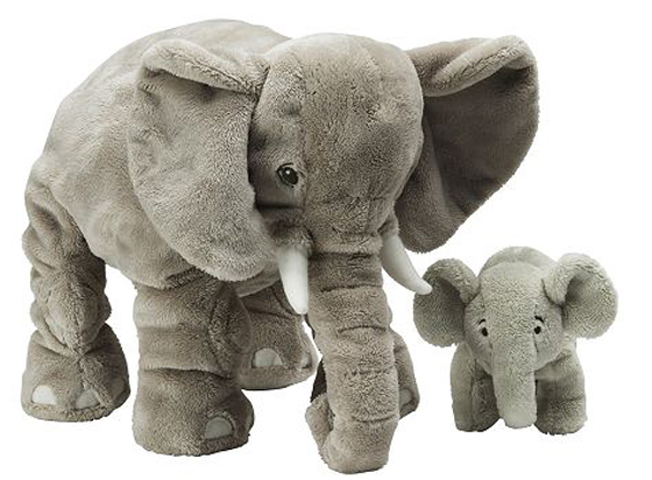
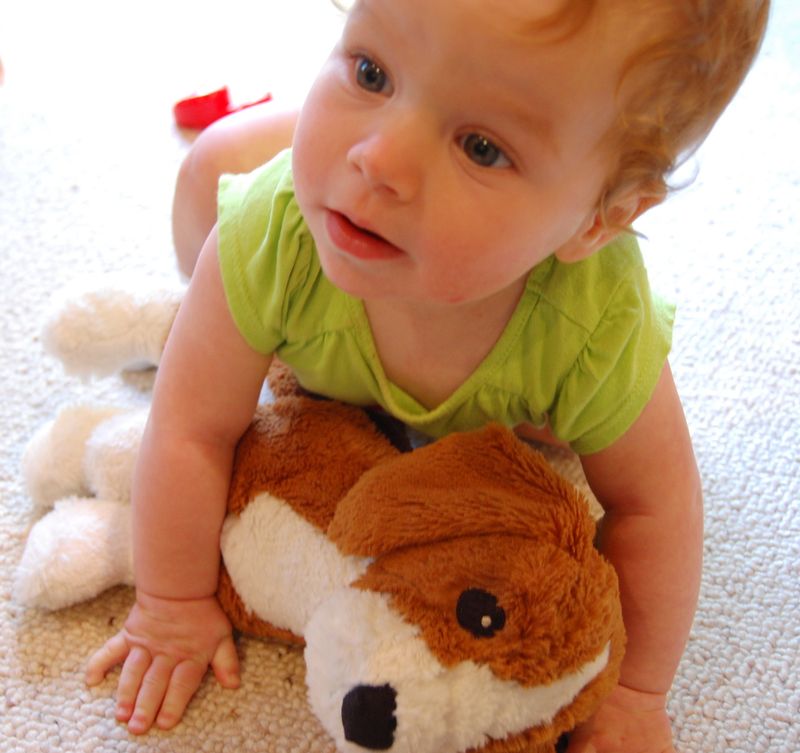
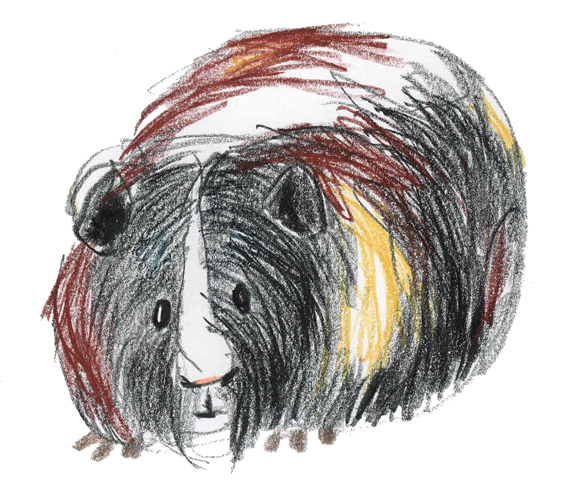
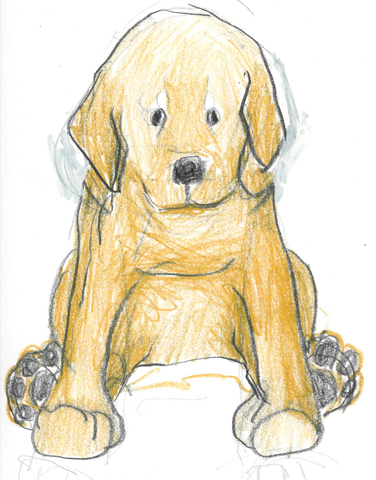
Such a great interview – thanks so much for sharing this with us! It is really interesting to learn about the process for mass-produced animal production and I love the fact that it is still so personalized by her, even tho someone in Asia is making the prototypes. I have a few stuffed animals from IKEA that I just love and I know my future children will have many in the years to come 🙂
Very interesting! I’m glad you are doing these Q&As…should be fun to meet others who do what you do. 🙂
I’m so glad I could help you 🙂
It was very interesting. I had no idea that someone else makes the sewing patterns and not the designer!
Thank you for this great post! I’ve also wondered a lot about commercially made toys lately, examining my kids’ ones thoroughly trying to figure out how they’re made. And not least what kind of equipment is used, definitely something else than an ordinary home sewing machine! How do they sew those tiny curves and circles?
Like you I would be very interested to hear what the person making up the actual pattern might have to say, but this was nevertheless very enlightening.
thanks so much for this very interesting post! I’m actually also a plush designer and have the same questions!
Actually, I’ve a french product designer (yes, I’m french ^^) who is working on one of my stuffies to produce this model in his company, it’s really interesting to work with a professionnal product designer! … and I so impatient to see the first prototype of one of my stuffies done by another company!!!
(sorry for my creative english, I hope you understand what I’m saying! ^^)
Very interesting, I had no idea either that the designer and pattern maker were different people.
A very good interview, Abby, thanks for seeking her out. I also am making my own stuffed toys, but I am terrible at the preliminary artwork. I’m very thankful that it is not my job or I’d be very bad at it for sure!
Wonderful information! Thanks for sharing.
Fascinating to get a window into the Ikea design process, thanks for sharing. The big golden lab toy is one of our favourites at home, as a pillow on the sofa! I also bought the elephants as a present but ended up keeping them – interesting to see my favourite designs are by the same designer.
What a wonderful interview accompanied with your comments. It was a pleasure to read and now I’m off to explore Annie’s site.
Looking forward to read more posts like this one 🙂
I can’t believe I stopped by today of all days. What a great interview and how amazing to meet the designer of ‘Mica’ my youngest sosn’s guinea pig which sadly landed on a lampshade just last night (phew, no fire – thanks IKEA!)and has now gone to the great guinea pig place in the sky… I have spent all morning searching e-bay 🙁 How wonderful to meet ‘Mica’s’ designer though!
Hi again, everyone!
Annie emailed me this morning saying she is very happy that we enjoyed learning about her design process and wanted to tell us a bit more about how the actual pattern drafting works. She says,
“I want to tell you about how the patterns are made because I can see in the comments that this is a big question. The factory has a pattern designer who is in fact a person who is very skilled in making the patterns. I have seen them in action and it is very much ‘down to earth’! No computers or anything.”
Thank you, Annie, for providing more insight into this part of the production process.
I am happy to know that there really seems to be no shortcut when it comes to turning a sketch into a sewing pattern. That part – the pattern drafting – is what is most interesting in soft toy making for me. I’m glad to know that in the end an actual person is figuring out how each toy will be sewn together!
To me the person who drew the original picture is not the designer of a soft toy. They are merely the inspiration behind the hardest work of all – translating into a pattern. Yet the actual people who put all the hard work in are faceless and nameless. I can do the drawing bit and most people could. The difficult bit is the pattern drafting.
Hi Louise,
I agree with you. Although drawing the toy and coming up with the concept is one portion of the work, designing the pattern pieces is certainly the larger share. It seems impossible for me to locate and interview the people who are employed by the overseas toys companies who actually do the pattern drafting, although they are the people I'd most like to talk with! Thank you for your comment.
Abby
Hi,
I just happened to run across this blog and found it very interesting and similar to how we also operate. I happen to be the pattern/sample maker for a plush teddy bear company named “Boyds Bears”. The only difference is I am the one who creates the original patterns in my home sewing room. I will then present it to our product development team and it is tweeked to meet their vision. Then our finished product will be sent to the factories overseas who will make us a sample using my product as the pattern. If we feel it is correct it will then be mass produced. Our company used to send the factories a drawing/picture and they would make a sample…wow some of them were real doozies! Our company found it too costly to send the samples back and forth from the overseas factories 3 or 4 times and how long it took each time(days or weeks). Keep in mind the 50 to 75 new products we put out each year. So that is when I got hired, so now in a few days we have a working sample of exactly what we want. The factories still make a sample for us to okay, before they are mass produced. It is fun taking a flat piece of fur and making it become and animal with its own personality. Just thought I would share. Excuse my grammar!
Peggy
Hi Peggy,
It's really great to hear from someone else who is doing the same kind of work as Annie. I think your job is really fascinating! To be able to design bears professionally is really pretty cool. Thank you for sharing your experiences!
I have a 10 months son who received very little IKEA soft toys as a gift. I am pleased to read this interview however as a mother I would feel reassured with a more robust description by the designer on product safety for instance no use of chemicals or fire retardant etc. Today looking on the web I found on this website a news that is worrinng such that IKEA has not confirmed when asked by this American website that their toys are fire retardant free or PVC free. http://www.safbaby.com/lead-free-pvc-free-and-fire-retardant-free-toy-manufacturers/
This interview is really focused on the designer of the toys since my blog is about toy design, among other things. Although child safety regulations for toys are an important issue, they aren’t the focus of this particular discussion.
Did you ever inquire if the fabric or stuffing was treated with flame retardant chemicals? I’ve read several articles stating plush toys coming out of (China in particular) were all tested positive for flame retardants. I know you never mention China specifically only “Asia”. I would be curious if you know or can find out more!
I’m sorry, but I don’t know Lola.
I love this guinea pig sketch that Annie created and i like seeing the ultimate toy being hugged by this tiny lady.